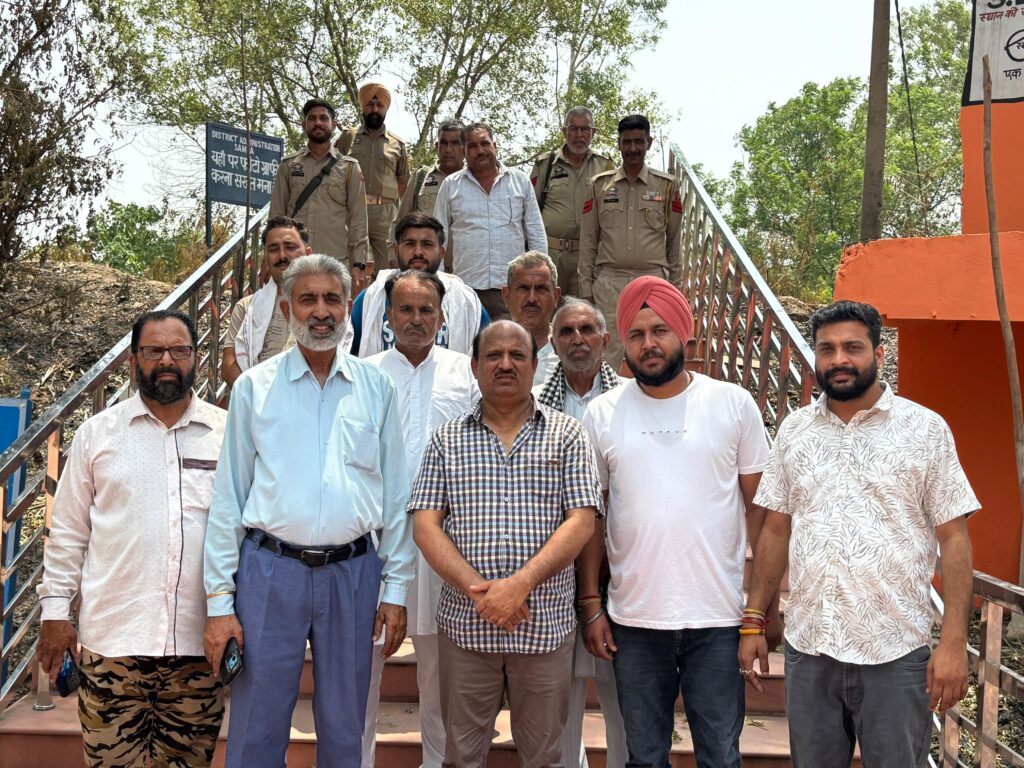Caste Enumeration in India’s Next Census: Why It Matters & Why the Government Was Initially Avers to it
Samba Times Special

On April 30, 2025, the Union Cabinet of India, chaired by Prime Minister Narendra Modi, announced a historic decision to include caste enumeration in the upcoming national census, marking a significant policy shift. This move, which will collect caste-wise data beyond Scheduled Castes (SCs) and Scheduled Tribes (STs) for the first time since 1931, has ignited widespread debate and a fierce political contest to claim credit. While the decision is hailed as a step toward social justice, the government’s earlier reluctance to conduct a caste census stems from a mix of social, political, and logistical concerns. This article examines the importance of caste enumeration, the reasons behind the government’s initial aversion, and why political parties are now vying to be seen as its champions.
The Importance of Caste Enumeration in the Census
Caste remains a defining feature of Indian society, shaping access to education, employment, political power, and social mobility. The absence of comprehensive caste data since 1931 has hindered effective policy-making and equitable resource distribution. The decision to include caste in the next census is significant for several reasons:
- Informed Policy-Making and Social Justice
Accurate caste data is essential for designing targeted welfare programs and affirmative action policies. India’s reservation system, which provides quotas for SCs, STs, and Other Backward Classes (OBCs) in education, jobs, and politics, relies on precise population figures. The Mandal Commission (1980) estimated OBCs at 52% of the population using outdated 1931 data, emphasizing the need for updated statistics to ensure fair representation and resource allocation. - Addressing Socio-Economic Inequalities
Caste-based discrimination perpetuates disparities in income, education, and opportunity. A caste census can reveal the socio-economic status of various caste groups, enabling tailored interventions. For instance, Bihar’s 2023 caste survey showed that 36% of the population belonged to Extremely Backward Classes (EBCs), prompting targeted policies. A national census could replicate this on a broader scale, fostering inclusive development. - Legal and Constitutional Mandate
Article 340 of the Indian Constitution mandates the investigation of conditions of socially and educationally backward classes. Courts have stressed the need for caste-wise data to justify reservation policies, as seen in legal challenges to OBC quotas. The unreleased Socio-Economic and Caste Census (SECC) of 2011, marred by inaccuracies, highlighted the need for a robust census-based approach. - Promoting Social Harmony
Union Minister Ashwini Vaishnaw emphasized that a centralized census under the Census Act, 1948, ensures transparency and minimizes politicization compared to state-level surveys. Surveys in states like Telangana and Karnataka have faced criticism for lacking rigor and stoking tensions. A national exercise could foster trust and social cohesion. - Political and Electoral Implications
Caste is a key factor in Indian politics, with parties mobilizing voters along caste lines. Accurate caste data could reshape electoral strategies, influence delimitation, and impact reservation policies. The Bihar caste survey, for example, altered political dynamics ahead of elections, emphasizing the census’s potential to realign voter bases.
Why Was the Government Initially Averse to Caste Enumeration?
Despite the clear benefits, successive governments, including the current BJP-led administration, were historically cautious about conducting a caste census. The reluctance stemmed from a combination of social, political, and logistical concerns:
- Fear of Deepening Social Divisions
Critics, including within the government, argued that enumerating castes could reinforce caste identities and exacerbate social divisions. The BJP, in particular, has promoted a unified Hindu identity through its Hindutva ideology, seeking to transcend caste-based fragmentation. A caste census risked highlighting inequalities within Hindu communities, potentially undermining this narrative and fueling caste-based conflicts. - Political Risks and Upper-Caste Backlash
The BJP’s voter base includes significant upper-caste support, particularly in northern India. A caste census could lead to demands for increased reservations for OBCs and other marginalized groups, alienating upper-caste voters who perceive such policies as reducing their opportunities. The government’s introduction of a 10% Economically Weaker Sections (EWS) quota in 2019 was partly aimed at addressing these concerns, but a caste census posed risks of unsettling this delicate balance. - Potential for Reservation Demands
Accurate caste data could trigger demands for revising reservation quotas, particularly from OBCs and newly identified backward groups. The Mandal Commission’s implementation in the 1990s sparked widespread protests, and the government feared that fresh data might reignite similar unrest or lead to legal challenges over quota limits, especially after the Supreme Court’s 50% cap on reservations. - Logistical and Methodological Challenges
The 2011 SECC, which attempted to collect caste data, was deemed unreliable due to poor design and reported an implausible 46 lakh castes. This failure raised concerns about the feasibility of accurately enumerating India’s complex caste structure, which includes thousands of sub-castes and regional variations. The government worried that a flawed census could discredit the exercise and fuel controversy. - Politicization of Data
State-level caste surveys, such as those in Bihar and Karnataka, have been accused of being politically motivated, with results allegedly manipulated to favor ruling parties. The central government was wary of a national caste census being similarly politicized, potentially undermining its credibility and leading to accusations of bias. - Resistance from Bureaucratic and Political Circles
Within the government, bureaucratic resistance and skepticism from senior leaders added to the aversion. During the UPA government’s tenure (2004–2014), the Congress-led coalition also hesitated, citing similar concerns about social unrest and logistical hurdles. The BJP, until recently, echoed these reservations, with leaders like Home Minister Amit Shah expressing caution about the census’s implications.
The Shift in Policy and Political Race to Claim Credit
The BJP’s decision to include caste enumeration reflects a strategic pivot, driven by electoral compulsions and pressure from opposition campaigns. The announcement has sparked a race among parties to claim credit, highlighting the issue’s political weight:
- Opposition’s Persistent Advocacy
The Congress and its Indian National Developmental Inclusive Alliance (INDIA) allies, including the Samajwadi Party and Rashtriya Janata Dal (RJD), have long demanded a caste census, framing it as a tool for social justice. Leaders like Rahul Gandhi and Mallikarjun Kharge criticized the BJP for delaying the 2011 SECC’s release and pushed for caste inclusion in the census. Congress-ruled states like Telangana and Karnataka conducted their own surveys, with Telangana’s Chief Minister Revanth Reddy claiming their efforts forced the central government’s hand. The opposition portrays the decision as a victory for their sustained campaign. - BJP’s Strategic Embrace
Historically ambivalent, the BJP’s volte-face is a calculated move to neutralize the opposition’s narrative and appeal to OBCs and Dalits, especially after electoral setbacks in states like Uttar Pradesh and Maharashtra in 2024. Union Minister Ashwini Vaishnaw and Home Minister Amit Shah have called the decision “historic,” accusing Congress of obstructing caste enumeration during its rule. The BJP also highlights its EWS reservation as proof of its inclusive credentials, aiming to mitigate upper-caste concerns. - Regional Parties and NDA Allies
Regional players like Bihar’s Janata Dal (United) (JD(U)), led by Nitish Kumar, and Lok Janshakti Party (Ram Vilas), led by Chirag Paswan, have claimed credit, citing Bihar’s 2023 caste survey as a catalyst. Tamil Nadu’s Dravida Munnetra Kazhagam (DMK), led by M.K. Stalin, also hailed the decision as a win for its advocacy. These parties see the census as a way to bolster their influence among caste-based voter groups. - Countering Opposition’s Narrative
The BJP’s announcement blunts the opposition’s campaign, which had gained traction by accusing the BJP of neglecting OBCs. By embracing the caste census, the BJP aims to reclaim the social justice mantle and prevent the drift of OBC and Dalit voters to rivals, particularly in states like Bihar, where caste dynamics are pivotal. - Electoral Timing
The decision’s timing, ahead of Bihar’s assembly elections, is strategic. Bihar’s 2023 caste survey revealed that over 63% of the population belongs to Backward and Extremely Backward Classes, shaping political strategies. The national census could similarly influence elections in Uttar Pradesh, Tamil Nadu, and other caste-sensitive states.
Challenges Ahead
While the decision is a milestone, challenges remain. A poorly executed census could repeat the 2011 SECC’s errors, undermining credibility. The government must ensure methodological rigor and transparency to avoid politicization. Balancing demands for increased reservations with upper-caste concerns will also test the BJP’s political acumen. Critics warn that caste enumeration could deepen social divisions if not handled sensitively.
Conclusion
The inclusion of caste enumeration in India’s next census is a transformative step toward addressing social inequalities, strengthening policy-making, and fulfilling constitutional mandates. However, the government’s earlier aversion, rooted in fears of social unrest, political backlash, and logistical hurdles, highlights the issue’s complexity. The BJP’s recent embrace of the caste census, driven by electoral pressures, has sparked a political race to claim credit, with parties like Congress, JD(U), and DMK vying to be seen as champions of social justice. As India prepares for this historic exercise, the government must prioritize transparency and inclusivity to ensure that the caste census serves as a tool for unity and progress, rather than division.
अगली जनगणना में जाति गणना शामिल: इसका महत्व, सरकार की शुरुआती अनिच्छा और राजनीतिक दलों का श्रेय लेने की होड़
30 अप्रैल, 2025 को, प्रधानमंत्री नरेंद्र मोदी की अध्यक्षता में केंद्रीय मंत्रिमंडल ने एक ऐतिहासिक निर्णय लिया, जिसमें आगामी राष्ट्रीय जनगणना में जाति गणना को शामिल करने की घोषणा की गई। यह कदम नीतिगत दृष्टिकोण में बड़े बदलाव का प्रतीक है, क्योंकि 1931 के बाद से अनुसूचित जातियों (एससी) और अनुसूचित जनजातियों (एसटी) के अलावा अन्य जातियों की गणना नहीं की गई है। इस निर्णय ने व्यापक चर्चा और राजनीतिक खींचतान को जन्म दिया है, जिसमें सभी दल इसकी वाहवाही लेने की होड़ में हैं। यह कदम सामाजिक समानता को बढ़ावा देने, नीति-निर्माण को मजबूत करने और राजनीतिक परिदृश्य को नया रूप देने की दिशा में महत्वपूर्ण माना जा रहा है। हालांकि, सरकार की पहले इस मुद्दे पर अनिच्छा सामाजिक, राजनीतिक और तकनीकी चिंताओं से उपजी थी। यह लेख जाति गणना के महत्व, सरकार की शुरुआती हिचक और राजनीतिक दलों की श्रेय लेने की होड़ का विश्लेषण करता है।
जनगणना में जाति गणना का महत्व
जाति भारतीय समाज की मूलभूत संरचना है, जो शिक्षा, रोजगार, राजनीतिक प्रतिनिधित्व और सामाजिक गतिशीलता को प्रभावित करती है। 1931 के बाद से व्यापक जाति डेटा की अनुपस्थिति ने प्रभावी नीति-निर्माण और संसाधनों के समान वितरण में बाधा डाली है। जाति गणना को अगली जनगणना में शामिल करना कई कारणों से महत्वपूर्ण है:
- सूचित नीति-निर्माण और सामाजिक न्याय
सटीक जाति डेटा कल्याणकारी योजनाओं और सकारात्मक कार्रवाई नीतियों को डिजाइन करने के लिए आवश्यक है। भारत की आरक्षण प्रणाली, जो एससी, एसटी और अन्य पिछड़ा वर्ग (ओबीसी) के लिए शिक्षा, सरकारी नौकरियों और राजनीति में कोटा प्रदान करती है, सटीक जनसंख्या आंकड़ों पर निर्भर करती है। मंडल आयोग (1980) ने 1931 के डेटा के आधार पर ओबीसी की आबादी 52% अनुमानित की थी, लेकिन अद्यतन आंकड़ों के बिना नीतियां वर्तमान जनसांख्यिकीय वास्तविकताओं को प्रतिबिंबित नहीं कर सकतीं। जाति गणना नीति निर्माताओं को असमानताओं को प्रभावी ढंग से दूर करने में सक्षम बनाएगी। - सामाजिक-आर्थिक असमानताओं का समाधान
जाति आधारित भेदभाव आय, शिक्षा और अवसरों में असमानता को बढ़ाता है। जाति गणना विभिन्न जाति समूहों की सामाजिक-आर्थिक स्थिति को उजागर कर सकती है, जिससे लक्षित हस्तक्षेप संभव होंगे। उदाहरण के लिए, बिहार की 2023 जाति सर्वेक्षण ने दिखाया कि 36% आबादी अत्यंत पिछड़ा वर्ग (ईबीसी) और 27% पिछड़ा वर्ग से थी, जिसके आधार पर लक्षित नीतियां बनाई गईं। राष्ट्रीय जनगणना इसे व्यापक स्तर पर दोहरा सकती है। - कानूनी और संवैधानिक अनिवार्यता
भारतीय संविधान का अनुच्छेद 340 सामाजिक और शैक्षिक रूप से पिछड़े वर्गों की स्थिति की जांच करने और उनके उत्थान के लिए उपाय सुझाने का आदेश देता है। न्यायालयों ने आरक्षण नीतियों को उचित ठहराने के लिए जाति-आधारित डेटा की आवश्यकता पर जोर दिया है। 2011 के सामाजिक-आर्थिक और जाति जनगणना (एसईसीसी) के अप्रकाशित डेटा की असफलता ने इसकी आवश्यकता को और उजागर किया। - सामाजिक सद्भाव को बढ़ावा
केंद्रीय मंत्री अश्विनी वैष्णव ने जोर देकर कहा कि जनगणना अधिनियम, 1948 के तहत राष्ट्रीय जनगणना पारदर्शिता सुनिश्चित करती है और राजनीतिकरण को कम करती है। तेलंगाना और कर्नाटक जैसे राज्यों में किए गए सर्वेक्षणों की आलोचना उनकी विश्वसनीयता और सामाजिक तनाव बढ़ाने के लिए हुई है। राष्ट्रीय जनगणना विश्वास और सामाजिक एकता को बढ़ावा दे सकती है। - राजनीतिक और चुनावी निहितार्थ
जाति भारतीय राजनीति में महत्वपूर्ण भूमिका निभाती है, और दल जाति पहचान के आधार पर मतदाताओं को संगठित करते हैं। सटीक जाति डेटा चुनावी रणनीतियों, परिसीमन और आरक्षण नीतियों को नया रूप दे सकता है। बिहार का जाति सर्वेक्षण इसका उदाहरण है, जिसने चुनावों से पहले राजनीतिक चर्चा को प्रभावित किया।
सरकार पहले क्यों थी अनिच्छुक?
लाभ स्पष्ट होने के बावजूद, केंद्र सरकार, जिसमें वर्तमान बीजेपी-नीत सरकार भी शामिल है, जाति गणना के प्रति सतर्क थी। इस अनिच्छा के कई सामाजिक, राजनीतिक और तकनीकी कारण थे:
- सामाजिक विभाजन की आशंका
आलोचकों का तर्क था कि जाति गणना जातिगत पहचान को और मजबूत कर सकती है और सामाजिक विभाजन को बढ़ा सकती है। बीजेपी, जो अपनी हिंदुत्व विचारधारा के माध्यम से हिंदुओं को जाति से परे एकजुट करने की कोशिश करती है, को डर था कि जाति गणना हिंदू समुदायों के बीच असमानताओं को उजागर कर सकती है, जिससे उसका कथानक कमजोर पड़ सकता है। - राजनीतिक जोखिम और उच्च जातियों का विरोध
बीजेपी का मतदाता आधार, विशेष रूप से उत्तर भारत में, उच्च जातियों पर निर्भर है। जाति गणना से ओबीसी और अन्य हाशिए पर पड़े समूहों के लिए आरक्षण की मांग बढ़ सकती है, जिससे उच्च जाति के मतदाता नाराज हो सकते हैं। 2019 में आर्थिक रूप से कमजोर वर्गों (ईडब्ल्यूएस) के लिए 10% आरक्षण लागू करना इस संतुलन को बनाए रखने का प्रयास था, लेकिन जाति गणना इस संतुलन को बिगाड़ सकती थी। - आरक्षण की मांग का डर
सटीक जाति डेटा से आरक्षण कोटे में संशोधन की मांग बढ़ सकती है, खासकर ओबीसी और नव-पहचाने गए पिछड़े समूहों से। 1990 के दशक में मंडल आयोग के कार्यान्वयन ने व्यापक विरोध प्रदर्शन शुरू किए थे, और सरकार को डर था कि नया डेटा इसी तरह के अशांति को जन्म दे सकता है। - तकनीकी और पद्धतिगत चुनौतियां
2011 का एसईसीसी, जिसने जाति डेटा एकत्र करने की कोशिश की, खराब डिजाइन के कारण अविश्वसनीय था और उसने 46 लाख जातियों की अवास्तविक संख्या दर्ज की। भारत की जटिल जाति संरचना, जिसमें हजारों उप-जातियां और क्षेत्रीय भिन्नताएं शामिल हैं, को सटीक रूप से गणना करने की चुनौती ने सरकार की चिंता बढ़ाई। - डेटा के राजनीतिकरण का जोखिम
बिहार और कर्नाटक जैसे राज्यों में जाति सर्वेक्षणों पर सत्तारूढ़ दलों के पक्ष में परिणामों को प्रभावित करने का आरोप लगा है। केंद्र सरकार को डर था कि राष्ट्रीय जाति गणना का भी राजनीतिकरण हो सकता है, जिससे इसकी विश्वसनीयता कम हो सकती है।
नीति में बदलाव और श्रेय लेने की होड़
बीजेपी का जाति गणना को अपनाने का निर्णय चुनावी दबाव और विपक्षी अभियानों के कारण एक रणनीतिक बदलाव को दर्शाता है। इस घोषणा ने दलों के बीच श्रेय लेने की होड़ शुरू कर दी है:
- कांग्रेस और इंडिया गठबंधन की वकालत
कांग्रेस और इसके इंडिया गठबंधन सहयोगी, जैसे समाजवादी पार्टी और राष्ट्रीय जनता दल, लंबे समय से जाति गणना की मांग कर रहे हैं। राहुल गांधी और मल्लिकार्जुन खड़गे ने 2011 के एसईसीसी डेटा को जारी करने और जनगणना में जाति शामिल करने की मांग की। तेलंगाना और कर्नाटक जैसे कांग्रेस शासित राज्यों ने अपने सर्वेक्षण किए, और तेलंगाना के मुख्यमंत्री रेवंत रेड्डी ने दावा किया कि उनके प्रयासों ने केंद्र पर दबाव डाला। - बीजेपी का रणनीतिक कदम
ऐतिहासिक रूप से अनिच्छुक बीजेपी का यह निर्णय विपक्ष के कथानक को बेअसर करने और ओबीसी व दलित मतदाताओं को आकर्षित करने की रणनीति है, खासकर 2024 में उत्तर प्रदेश और महाराष्ट्र में चुनावी झटकों के बाद। केंद्रीय मंत्री अश्विनी वैष्णव और गृह मंत्री अमित शाह ने इसे “ऐतिहासिक” कदम बताया, और कांग्रेस पर अतीत में इसे रोकने का आरोप लगाया। - क्षेत्रीय दल और एनडीए सहयोगी
बिहार के मुख्यमंत्री नीतीश कुमार (जदयू) और चिराग पासवान (लोजपा) ने बिहार के 2023 सर्वेक्षण को उत्प्रेरक बताया। तमिलनाडु के द्रमुक नेता एम.के. स्टालिन ने इसे अपनी वकालत की जीत करार दिया। ये दल इसे अपने जाति-आधारित मतदाताओं को मजबूत करने के अवसर के रूप में देखते हैं। - विपक्ष के कथानक को बेअसर करना
बीजेपी का यह कदम विपक्ष के अभियान को कमजोर करने की रणनीति है, जो बीजेपी पर ओबीसी की उपेक्षा का आरोप लगा रहा था। इससे बीजेपी सामाजिक न्याय के मुद्दे पर अपनी स्थिति मजबूत करना चाहती है। - चुनावी समय
बिहार विधानसभा चुनाव से पहले यह घोषणा रणनीतिक है। बिहार में 63% से अधिक आबादी पिछड़ा और अत्यंत पिछड़ा वर्ग से है, और राष्ट्रीय जनगणना उत्तर प्रदेश, तमिलनाडु जैसे राज्यों में भी चुनावी गतिशीलता को प्रभावित कर सकती है।
आगे की चुनौतियां
यह निर्णय एक मील का पत्थर है, लेकिन चुनौतियां बाकी हैं। खराब निष्पादन 2011 के एसईसीसी की गलतियों को दोहरा सकता है। सरकार को पद्धतिगत कठोरता और पारदर्शिता सुनिश्चित करनी होगी। बढ़ते आरक्षण की मांग और उच्च जातियों की चिंताओं को संतुलित करना भी बीजेपी की राजनीतिक कुशलता की परीक्षा लेगा।
निष्कर्ष
अगली जनगणना में जाति गणना का समावेश सामाजिक असमानताओं को दूर करने, नीति-निर्माण को मजबूत करने और संवैधानिक जनादेश को पूरा करने की दिशा में एक परिवर्तनकारी कदम है। हालांकि, सामाजिक अशांति, राजनीतिक प्रतिक्रिया और तकनीकी बाधाओं के डर से सरकार पहले अनिच्छुक थी। बीजेपी का हालिया कदम, जो चुनावी दबावों से प्रेरित है, ने श्रेय लेने की होड़ शुरू कर दी है, जिसमें कांग्रेस, जदयू और द्रमुक जैसे दल सामाजिक न्याय के चैंपियन बनने की कोशिश कर रहे हैं। भारत को इस ऐतिहासिक कवायद के लिए तैयार करते समय सरकार को पारदर्शिता और समावेशिता को प्राथमिकता देनी होगी ताकि जाति गणना एकता और प्रगति का साधन बने, न कि विभाजन का।





